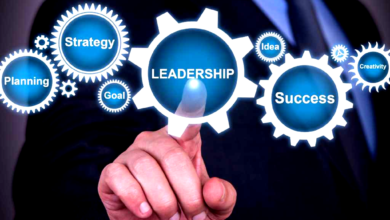
The healthcare landscape has undergone a dramatic transformation in recent years, with the Internet of Things (IoT) emerging as a pivotal force reshaping how medical professionals deliver care and patients manage their health. As we navigate through 2025, IoT in healthcare has evolved from a promising concept to an indispensable reality that enhances patient outcomes, streamlines clinical workflows, and reduces healthcare costs across the globe.
Smart healthcare devices now permeate every aspect of medical care, from wearable fitness trackers that monitor vital signs in real-time to sophisticated implantable sensors that provide continuous health surveillance. This interconnected ecosystem of medical IoT devices creates an unprecedented level of connectivity between patients, healthcare providers, and medical systems, enabling proactive healthcare management rather than reactive treatment approaches.
The integration of IoT technology in healthcare has proven particularly valuable in addressing the growing demands of an aging population, the increasing prevalence of chronic diseases, and the need for more efficient healthcare delivery systems. With over 15 billion connected medical devices expected to be in use by the end of 2025, the healthcare sector is experiencing a digital revolution that promises to make quality care more accessible, personalized, and effective than ever before.
This comprehensive exploration examines how connected health devices are reshaping patient care, the transformative impact of remote patient monitoring systems, and the innovative applications that are setting new standards for medical excellence. From telemedicine IoT solutions that bridge geographical gaps to smart hospital technologies that optimize resource utilization, the convergence of healthcare and IoT represents one of the most significant technological advances of our time.
The Evolution of IoT in Healthcare: From Concept to Reality
Historical Context and Development Timeline
The journey of IoT in healthcare began in the early 2000s with simple wireless health monitoring devices, but the true acceleration occurred in the past decade. Initially, healthcare IoT applications were limited to basic fitness trackers and simple monitoring devices. However, the convergence of advanced sensors, artificial intelligence, cloud computing, and 5G connectivity has transformed these rudimentary tools into sophisticated healthcare automation systems.
The evolution has been marked by several key milestones: the introduction of FDA-approved wearable medical devices in 2015, the widespread adoption of smart hospital infrastructure by 2020, and the explosive growth of telehealth IoT solutions during the global pandemic. Today’s IoT healthcare solutions encompass everything from pill bottles that remind patients to take medications to AI-powered diagnostic devices that can detect diseases in their earliest stages.
Current Market Landscape
The global IoT in healthcare market has experienced exponential growth, reaching a valuation of over $180 billion in 2025. This growth is driven by increasing consumer awareness of preventive healthcare, rising healthcare costs that demand more efficient solutions, and technological advances that make connected medical devices more reliable and affordable. Healthcare providers are increasingly investing in digital health IoT infrastructure to improve patient satisfaction, reduce readmission rates, and enhance operational efficiency.
Core IoT Technologies Revolutionizing Patient Care
Smart Wearable Devices and Continuous Monitoring
Wearable health technology has become the cornerstone of modern preventive healthcare, with devices ranging from smartwatches that monitor heart rate variability to specialized sensors that track blood glucose levels continuously. These IoT medical devices provide healthcare professionals with unprecedented access to real-time patient data, enabling early intervention and personalized treatment plans.
Advanced biosensors integrated into wearable devices can now monitor multiple vital signs simultaneously, including blood pressure, oxygen saturation, skin temperature, and even stress levels through cortisol detection. This continuous stream of health data allows for the creation of comprehensive patient health profiles that support predictive healthcare analytics and personalized medicine approaches.
Remote Patient Monitoring Systems
Remote patient monitoring represents one of the most impactful applications of IoT in healthcare, particularly for managing chronic conditions such as diabetes, heart disease, and respiratory disorders. These systems enable patients to remain in their homes while maintaining close medical supervision, reducing hospital readmissions and improving quality of life.
Modern RPM systems incorporate multiple connected devices that automatically transmit patient data to healthcare providers’ dashboards. This includes smart blood pressure cuffs, digital scales that track weight fluctuations, pulse oximeters, and even smart inhalers that monitor medication adherence and lung function. The integration of these devices creates a comprehensive monitoring network that provides healthcare professionals with actionable insights into patient health trends.
Connected Medical Equipment and Smart Hospitals
The concept of smart hospitals has evolved significantly, with IoT-enabled medical equipment now forming the backbone of modern healthcare facilities. These systems include connected imaging equipment that automatically schedules maintenance, smart IV pumps that prevent medication errors, and environmental monitoring systems that ensure optimal conditions for patient recovery.
Hospital IoT infrastructure extends beyond individual devices to encompass entire facility management systems. Smart lighting adjusts automatically based on patient needs and circadian rhythms, HVAC systems maintain optimal air quality and temperature, and asset tracking systems ensure that critical medical equipment is always available when needed.
Transformative Applications Across Healthcare Sectors
Chronic Disease Management
IoT healthcare solutions have revolutionized the management of chronic diseases by enabling continuous monitoring and real-time intervention. For diabetes patients, connected glucose monitors and insulin pumps work together to maintain optimal blood sugar levels automatically. Heart failure patients benefit from implantable devices that monitor cardiac function and alert healthcare providers to potential complications before they become critical.
The integration of AI in healthcare IoT has enhanced these applications by providing predictive analytics that can forecast disease exacerbations days or weeks in advance. This proactive approach to chronic disease management has demonstrated significant improvements in patient outcomes while reducing healthcare costs associated with emergency interventions and hospitalizations.
Elderly Care and Assisted Living
The aging population has driven significant innovation in IoT elderly care solutions. Smart home systems equipped with motion sensors, fall detection devices, and medication management systems enable seniors to maintain independence while ensuring their safety and health. Connected health devices designed specifically for elderly patients include simplified interfaces, emergency alert systems, and family notification features.
Advanced senior care IoT solutions incorporate environmental monitoring that can detect changes in daily routines, sleep patterns, and activity levels that may indicate health issues. These systems provide peace of mind for families while enabling healthcare providers to intervene early when health concerns arise.
Mental Health and Wellness Monitoring
IoT in mental healthcare has emerged as a critical application area, with devices capable of monitoring stress levels, sleep quality, and mood indicators through various physiological markers. Wearable devices can detect changes in heart rate variability, skin conductance, and activity patterns that correlate with mental health states.
These digital mental health solutions provide therapists and psychiatrists with objective data to supplement traditional assessment methods. The continuous nature of IoT monitoring enables the detection of mental health episodes in real-time, allowing for immediate intervention and support.
The Technology Infrastructure Behind Healthcare IoT
Connectivity Solutions and Network Requirements
The success of IoT in healthcare depends heavily on robust connectivity infrastructure. 5G networks have become essential for supporting the high-bandwidth, low-latency requirements of critical medical applications. Healthcare connectivity solutions must provide 99.9% uptime reliability, as any interruption could potentially impact patient safety.
Edge computing has emerged as a crucial component of healthcare IoT infrastructure, enabling real-time processing of medical data at the point of care. This reduces latency, improves response times, and ensures that critical health information remains available even during network disruptions.
Data Security and Privacy Protection
Healthcare IoT security represents one of the most critical challenges facing the industry. Medical devices handle highly sensitive patient information that must be protected according to strict regulatory requirements such as HIPAA in the United States and GDPR in Europe. Advanced encryption protocols, secure device authentication, and continuous security monitoring are essential components of any IoT healthcare deployment.
Blockchain technology is increasingly being integrated into healthcare IoT systems to provide immutable audit trails and secure data sharing between healthcare providers. This technology ensures data integrity while enabling interoperability between different healthcare systems and devices.
Cloud Integration and Data Analytics
Cloud platforms serve as the central nervous system for IoT healthcare solutions, providing the computational power necessary to process vast amounts of medical data in real-time. Healthcare cloud solutions offer scalability, reliability, and advanced analytics capabilities that enable healthcare providers to derive actionable insights from IoT-generated data.
Machine learning algorithms integrated into cloud platforms can identify patterns in patient data that human analysts might miss, enabling early disease detection and personalized treatment recommendations. These AI-powered healthcare systems continuously learn and improve their accuracy over time, providing increasingly sophisticated diagnostic and treatment support.
Impact on Patient Outcomes and Healthcare Delivery
Improved Patient Engagement and Self-Management
IoT patient engagement solutions have transformed the relationship between patients and their healthcare providers. Interactive mobile applications connected to IoT medical devices provide patients with real-time feedback about their health status, encouraging active participation in their care management. Gamification elements incorporated into these platforms motivate patients to maintain healthy behaviors and adhere to treatment regimens.
Patient-centered IoT solutions empower individuals to take control of their health by providing easy access to their medical data, treatment progress, and healthcare provider communications. This increased engagement has been shown to improve treatment adherence, reduce hospital readmissions, and enhance overall patient satisfaction.
Enhanced Clinical Decision Making
Healthcare providers benefit from IoT clinical decision support systems that aggregate and analyze patient data from multiple sources. These systems provide comprehensive patient dashboards that highlight critical health indicators, alert providers to potential complications, and suggest evidence-based treatment options.
The integration of predictive analytics in healthcare IoT enables proactive care management by identifying patients at risk of adverse events before they occur. This predictive capability has been particularly valuable in critical care settings, where early intervention can mean the difference between life and death.
Cost Reduction and Operational Efficiency
Healthcare cost reduction through IoT implementation has been substantial, with studies showing decreases in healthcare spending of up to 25% in organizations that have fully embraced IoT technologies. Remote monitoring reduces the need for frequent clinic visits, while predictive maintenance of medical equipment minimizes downtime and repair costs.
Healthcare operational efficiency improvements include optimized staff scheduling based on patient acuity data, automated inventory management that prevents stockouts of critical supplies, and streamlined patient flow through smart scheduling and tracking systems.
Challenges and Barriers to IoT Healthcare Adoption
Technical Challenges and Interoperability Issues
Despite the significant benefits, IoT healthcare implementation faces several technical challenges. Device interoperability remains a major hurdle, as medical devices from different manufacturers often use proprietary communication protocols that prevent seamless data exchange. Healthcare organizations must invest in integration platforms that can bridge these gaps and ensure that all devices work together effectively.
Data standardization is another critical challenge, as medical data formats vary widely across different systems and devices. The adoption of industry standards such as HL7 FHIR (Fast Healthcare Interoperability Resources) is helping to address these issues, but full standardization remains an ongoing process.
Regulatory and Compliance Considerations
Healthcare IoT regulation continues to evolve as regulatory bodies work to keep pace with rapidly advancing technology. Medical device manufacturers must navigate complex approval processes while ensuring that their products meet strict safety and efficacy requirements. The FDA has established specific pathways for software-based medical devices, but the regulatory landscape remains complex and often unclear.
Compliance requirements vary by region and application, requiring healthcare organizations to implement comprehensive governance frameworks that address data privacy, device security, and patient safety. These requirements add complexity and cost to IoT implementations but are essential for protecting patient welfare and maintaining public trust.
Cultural and Organizational Resistance
Healthcare technology adoption often faces resistance from clinical staff who are comfortable with established workflows and skeptical of new technologies. Successful IoT healthcare transformation requires comprehensive change management programs that address staff concerns, provide adequate training, and demonstrate clear benefits to patient care.
Leadership commitment and physician champions are crucial for overcoming organizational resistance to digital health transformation. Healthcare organizations that invest in proper change management and staff education see significantly higher success rates in their IoT implementation projects.
Future Trends and Innovations in Healthcare IoT
Artificial Intelligence Integration
The convergence of AI and IoT in healthcare is creating unprecedented opportunities for advanced medical diagnostics and treatment optimization. Machine learning algorithms trained on vast datasets from IoT devices can identify subtle patterns in patient data that indicate early-stage diseases or treatment complications.
AI-powered IoT systems are being developed to provide real-time clinical decision support, automated diagnosis assistance, and personalized treatment recommendations. These systems promise to augment human clinical expertise while reducing diagnostic errors and improving treatment outcomes.
Advanced Sensor Technologies
Next-generation biosensor technology is enabling the development of minimally invasive monitoring devices that can track previously unmeasurable health parameters. Nano-sensors embedded in contact lenses can monitor intraocular pressure for glaucoma patients, while smart bandages can track wound healing progress and detect infections automatically.
Molecular-level sensors are being developed that can detect specific biomarkers associated with cancer, infectious diseases, and metabolic disorders. These advances will enable earlier disease detection and more precise monitoring of treatment effectiveness.
Edge Computing and Real-Time Processing
Edge computing in healthcare is becoming essential for applications that require immediate response times, such as cardiac monitoring and intensive care management. By processing data locally rather than sending it to cloud servers, edge computing reduces latency and ensures that critical alerts reach healthcare providers without delay.
Real-time healthcare analytics powered by edge computing enables instantaneous clinical decision-making and automated response systems that can save lives in emergency situations. This technology is particularly valuable in rural and remote healthcare settings where connectivity may be limited.
Implementation Strategies for Healthcare Organizations
Planning and Assessment
Successful IoT healthcare strategy development begins with comprehensive assessment of organizational needs, existing infrastructure, and resource availability. Healthcare organizations must evaluate their technical capabilities, staff readiness, and financial resources before embarking on large-scale IoT implementations.
ROI assessment for healthcare IoT projects should consider both quantitative benefits such as cost savings and efficiency improvements, as well as qualitative benefits like improved patient satisfaction and clinical outcomes. Organizations that take a strategic, phased approach to implementation typically achieve better results than those that attempt large-scale deployments without adequate planning.
Pilot Programs and Gradual Deployment
Pilot program development allows healthcare organizations to test IoT solutions on a small scale before committing to full implementation. Successful pilots demonstrate clear benefits, identify potential challenges, and provide valuable lessons for larger deployments.
Phased implementation strategies enable organizations to build expertise and confidence gradually while minimizing risk and disruption to existing operations. This approach also allows for iterative improvements based on real-world experience and user feedback.
Staff Training and Change Management
Healthcare technology training programs must address both technical skills and workflow integration to ensure successful adoption. Training should be role-specific and hands-on, allowing staff to gain confidence with new technologies in controlled environments before using them in patient care situations.
Change management strategies should emphasize the benefits of IoT technologies for both patient care and job satisfaction. Healthcare organizations that involve clinical staff in the selection and implementation process see higher adoption rates and better long-term success.
Conclusion
The transformation of healthcare through IoT technology represents one of the most significant advances in medical care delivery in decades. As we progress through 2025, smart healthcare devices continue to evolve, offering increasingly sophisticated capabilities that enhance patient outcomes, improve clinical efficiency, and reduce healthcare costs.
The success of IoT in healthcare depends on continued collaboration between technology developers, healthcare providers, regulatory bodies, and patients themselves. Organizations that embrace this technology thoughtfully, with proper planning and implementation strategies, are positioning themselves to deliver superior patient care while achieving operational excellence.
The future of connected health promises even greater innovations, with artificial intelligence, advanced sensors, and edge computing capabilities that will further revolutionize how we approach health and wellness. As these technologies mature and become more accessible, the vision of truly personalized, predictive, and preventive healthcare becomes increasingly achievable.
Healthcare organizations that begin their IoT transformation journey today will be best positioned to capitalize on these future opportunities while meeting the evolving needs of their patients and communities. The revolution in healthcare IoT is not just about technology – it’s about creating a more connected, efficient, and effective healthcare system that serves everyone better.











